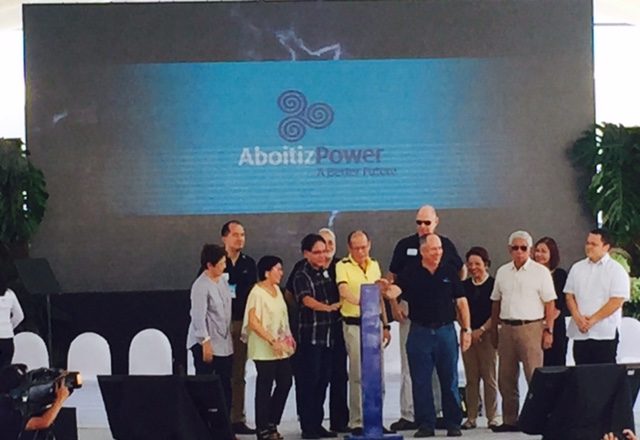SUMMARY
This is AI generated summarization, which may have errors. For context, always refer to the full article.

DAVAO CITY, Philippines — The newly-inaugurated 300-megawatt (MW) coal power plant in Davao City will only be sufficient for 2016, Davao Lights and Power Company CEO Art Millan said on Friday, January 8.
The new power plant, which would supply 260 MWs of base load power to the Mindanao grid, is expected to alleviate the already-failing power situation in Mindanao for the year, Davao Lights and Power, a sister company of operator AboitizPower’s Therma South Incorporated, said.
The plant’s rated power is 300 MWs, but it is using the 40 MWs for in-house consumption.
Millan said the new capacity would only be good for 2016 and would even be eaten up by new investments in 2017.
The Davao Lights and Power CEO added Mindanao would need at least 300 MW of new power capacity yearly for the next 5 years to address the power deficit.
Energy Secretary Zenaida Monsada said that as Mindanao’s economy grows, its power generation and reserve should also increase.
Monsada attended the power plant inauguration keynoted by President Benigno Aquino III on Friday.

‘At a critical level’
Mindanao’s heavy reliance on its hydroelectric power plants and the lack of new power plants have put the island’s power supply at a critical level.
Romeo Montenegro, Mindanao Development Authority Public Affairs head, said the Agus-Pulangi hydro power plants were in a critical condition during the El Niño phenomenon in 2015.
El Niño reduced the capacity of the hydroelectric power plants with Pulangi IV, producing only 60 MW from its rated capacity of 144 MW.
Agus, meanwhile, is only producing 214 MW, as Agus 1 and 2 had been isolated from the Mindanao grid after their towers were bombed on December 24.
There at least 11 power plants under construction in Mindanao that would go online between 2016 and 2020. These would provide at least 675 MW.
On Thursday, January 7, the National Grid Corporation of the Philippines (NGCP) issued a red alert status for the Mindanao grid with negative power reserve.
Beth Ladaga, NGCP’s Regional Corporate Communications and Public Affairs officer in Mindanao, said the Mindanao grid almost collapsed on January 6, with contingency reserves at 0 MW due to the isolation of the National Power Corporation (NAPOCOR)-owned generating facilities Agus 1 and 2 hydropower plants.
Agus 1 and 2 hydro facilities are connected to the grid through Agus 2-Kibawe 138 kilovolts line.
Tower bombings
Ladaga said the continued bombing of the NGCP transmission towers – 4 in December 2015 alone – is putting Mindanao in precarious situation.
“If the bombings continue, the power supply in Mindanao will be severely affected,” Ladaga said.
NGCP has yet to restore bombed Tower25 and Agus 2-Kibawe lines due to “uncooperative land owners.”
The owners of the property where the tower is located refused NGCP entry to repair the damaged transmission facility.
Negotiations with the owners were unsuccessful because they alleged that the government failed to pay their claims long ago.
The President said the government has a scheduled meeting next week to address the inconsistent land valuation and landowners’ concerns.
He said, however, that since the power industry is “imbued with national interest” he was certain that “there are so many laws that can be utilized to ensure that access to the repair of these towers is done posthaste.”
Monsada said that the department is constantly coordinating with NGCP, NAPOCOR, Mindanao Development Authority, local government units, other energy stakeholders and the Office of the Executive secretary to address the situation. – Rappler.com
Add a comment
How does this make you feel?
There are no comments yet. Add your comment to start the conversation.